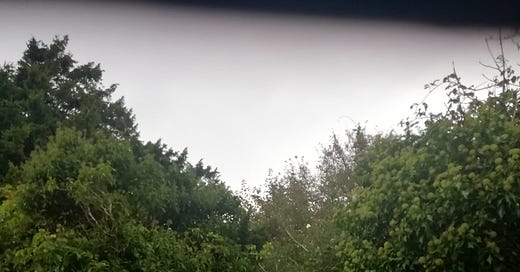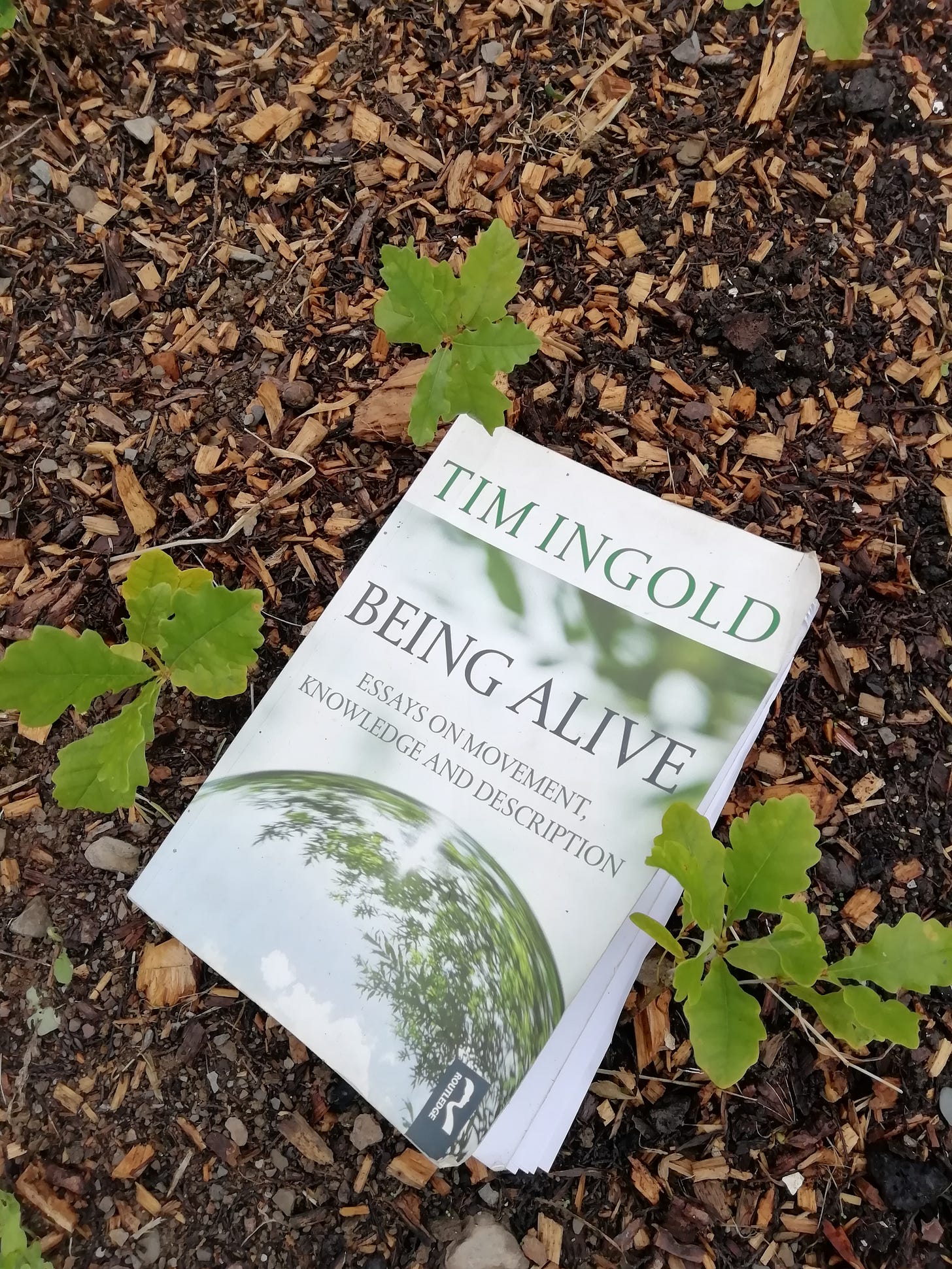Thinking of Yew
This post was originally published on my email list on September 28th.
This morning Mark and myself went up to the Townsend graveyard in search of a yew tree to take some cuttings from. Their is none at Myross and it is hoped that we can introduce some to diversify the area. They are usually found in stands together. Aside from improving the biodiversity of the area they would make a great feature. The graveyard was once part of the larger Myross Estate and has the ruins of an old chapel. Their are a couple of interesting gravestones about, decorated with an array of very unusual lichen. Its got an old world graveyard vibe and strangely feels quiet nice to be in. I love how in this photo the hedera hibernica (or Irish Ivy) puffs out around the gate. I've noticed the bees loving it this year and they give fruit to the birds when the pickings are slim. Visiting new spots is really exciting to me, mostly because their are not very many left that hold such beauty and mystery. It was great to find a number of yew trees standing happy and some impressively tall. Not only that but their are differences between the individual trees that warrant further research. Some of them have more curly leaves and others flat, some have thicker singular trunks and others are multi-stemmed. Regardless, they are beautiful and the birds will be happy as they are just starting to put on fruit. We will go back and have a closer look at the trees and hopefully take some seeds for further propagation.
Their is much to say about yew and its history and importance to Irish culture. Their is a beautiful woods in Muckross in Killarney called Reenadina and its otherworldly and definitely worth a visit. Reenadinna Woods | Mossy Woods | Killarney National Park (killarneyguide.ie)
At the nursery I put in the last of the small oaks and potted some cuttings from two of the yew. Todays text was an extract from Tim Ingold's essay "Earth Sky and Water" titled "Living in the Land" and from the book "Being Alive, Essays on Movement, Knowledge and Description" (2010). Chatting with Rachel last week made me want to go back to this book and writing about really BEING and recognising that being in a multi layered landscape. Our worlds are often so two dimensional (even more so when we are inside in the winter) and it is only through tactical, visceral, phenomenological experiences that we can develop true meaning in relation to our wider environment. In this extract Ingold speaks about how substances such as wind, detritus and grass intermingle creating the vibrant world we often don't get the chance to witness.
The nursery now has a sign (Thanks to Mark, thank you Mark) and I can already feel it growing legs. I'm openning up the mornings to anyone who is interested to come. So do bring a friend.
Friday nights film "A Note for Nature" turned out to be a gorgeous wee gathering and we went to Connollys after for chats, pints, hot port and tea. I'm looking forward to more chats and meets regarding creative activity at CECAS.
See you next week 11-1 in the walled garden.
I will leave you all with Natalia Beylis and Eimear Reidy's "Whose Woods These Are". A stunning collaboration I've been lucky to see performed. I listen to the CD driving around imaging the sparse landscapes becoming multilayered topographies enveloped in every assortment of green.
Whose Woods These Are | Eimear Reidy & Natalia Beylis | Natalia Beylis (bandcamp.com)






